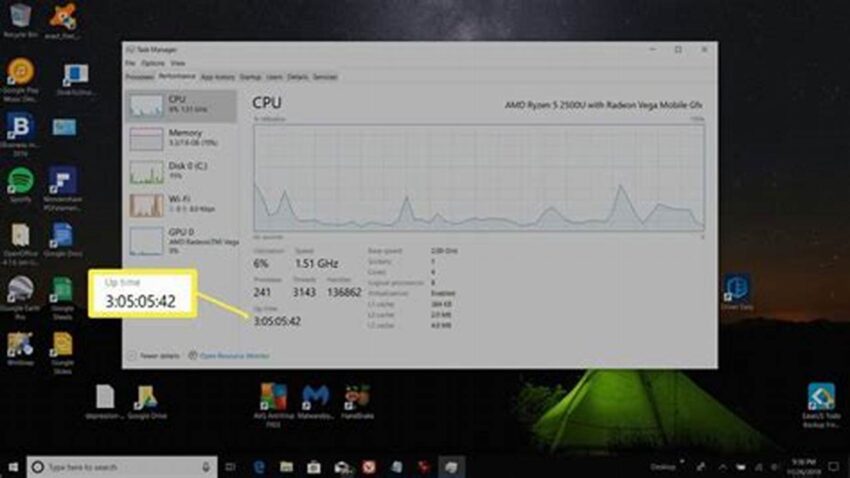Knowing how long a Windows system has been running since its last restart is often crucial for troubleshooting, performance analysis, and system maintenance. Extended uptime can sometimes lead to performance degradation, while frequent unexpected restarts might indicate underlying issues. Several straightforward methods provide quick access to this information, enabling users to readily assess system stability and potential problems.
Task Manager
The Task Manager offers a direct way to view system uptime. Accessing it through Ctrl+Shift+Esc or right-clicking the taskbar reveals the uptime under the “Performance” tab.
System Information (msinfo32)
The System Information tool provides comprehensive system details, including uptime. Launch it by typing “msinfo32” in the Run dialog (Windows key + R).
Command Prompt (cmd)
The command prompt offers a command-line approach. Typing “systeminfo” and pressing Enter displays various system statistics, including uptime.
PowerShell
PowerShell, a more powerful command-line tool, also provides uptime information. The command “Get-CimInstance Win32_OperatingSystem | Select LastBootUpTime” displays the last boot time, which can be used to calculate uptime.
Uptime Monitoring Tools
Dedicated uptime monitoring tools offer advanced features beyond basic uptime checks, including historical data, alerts, and performance monitoring. These are particularly useful for servers and critical systems.
Event Viewer
The Event Viewer logs system events, including startups and shutdowns. Analyzing these logs can provide a history of uptime and restart events.
Network Monitoring Tools
Some network monitoring tools include uptime monitoring as a feature, allowing administrators to track the uptime of multiple systems on a network.
Tips for Utilizing Uptime Information
Regular Checks: Periodically checking uptime helps establish a baseline and identify deviations from normal behavior.
Troubleshooting: Unexpected restarts or short uptimes can indicate hardware or software issues.
Performance Analysis: Long uptimes can sometimes correlate with performance degradation, suggesting a need for a restart.
Security Analysis: Unexpected reboots might also be a sign of malicious activity.
Why is knowing my system’s uptime important?
Uptime information is valuable for troubleshooting performance issues, identifying potential hardware or software problems, and assessing overall system stability.
How can uptime data help with troubleshooting?
Frequent unexpected restarts, indicated by short uptimes, can point to underlying issues requiring further investigation.
What are the implications of excessively long uptimes?
While not always problematic, extended uptimes can sometimes lead to decreased performance due to resource exhaustion or accumulated temporary files.
Are there any security implications related to uptime?
Unexpected reboots, especially if not initiated by the user, could be a sign of malware or other security breaches.
Monitoring system uptime is a simple yet effective way to gain insights into the health and stability of a Windows system. By utilizing the readily available methods outlined above, users can proactively identify potential problems and ensure optimal system performance.

